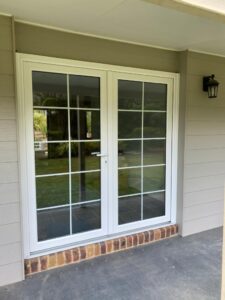EE Windows have always been proud producers of high-quality and energy-efficient products, so understanding the history of glass and where it all began from day one right up to how we got to the standards we have at present, is an interesting conversation starter for us. From its very beginnings when it was used for weapons and decorative ornaments, glass has become one of the world’s most versatile materials used in buildings, cars, and furniture. Glass is a fascinating material that’s so ubiquitous in modern life and yet, at its best, it’s wonderfully invisible.
Glass originated in Mesopotamia, a historical region of Western Asia with the first objects made wholly of glass in 2500BC. The exact origins have never been clearly discovered but it’s believed the ritual instructions for glassmaking were written on clay tablets and reproduced over the centuries. The discovery of `glass blowing` around the end of the 1st century was a revolutionary event in the history of glassmaking. This was the same time that the invention of the window was born and used to fill the wide-open holes on building walls.
Through the Middle Ages and Renaissance, glassmaking skills across Europe declined for about a thousand years and standards remained far below those of the Romans. The range of wares and the quality of the material was poor but the stained-glass windows that began to appear in the new Gothic churches in Europe in the 12th century reached their full wonder in the 13th and 14th centuries. Below is a photo of the beautiful and extensive 13th-century stained glass windows in Sainte Chappelle:

Up until the 1600s, glass was made by blowing large cylinders of hot glass which were then cut and flattened into sheets. From there came the new techniques of making plate glass and sheet glass but both of these techniques were time-consuming and incredibly costly for manufacturers, not to mention the fact that the quality of the finished product was never perfect.
Fast-forward to the industrial revolution and factories became home to mechanical technology that enabled mass production with the invention of an automatic bottle blowing machine. In 1959 “Float glass” was invented in the UK by Sir Alistair Pilkington which is one of the most basic forms of architectural glass and can be processed further to develop variations of glass such as tempered and laminated glass. Up until that point, the revolution brought with it a far more in-depth approach to the world of glass but after 1890, the development and manufacturing of glass increased rapidly. It has evolved through innovative and technological evolution that naturally continues to pave the way.
It’s not hard to see how and why glass has lasted through the ages and evolved with technology in the ways that it has. Some have even dubbed the present as ‘The Glass Age’ with touch screens everywhere, spectacular floor to ceiling windows, fibre optic cables and mirrors all around.
The future of our industry at EE Windows is certainly bright and we will always aim to provide our customers with the highest quality products and services that we can! If you are interested in how you can incorporate timelessly beautiful glass into your home, contact us today to find out more.









